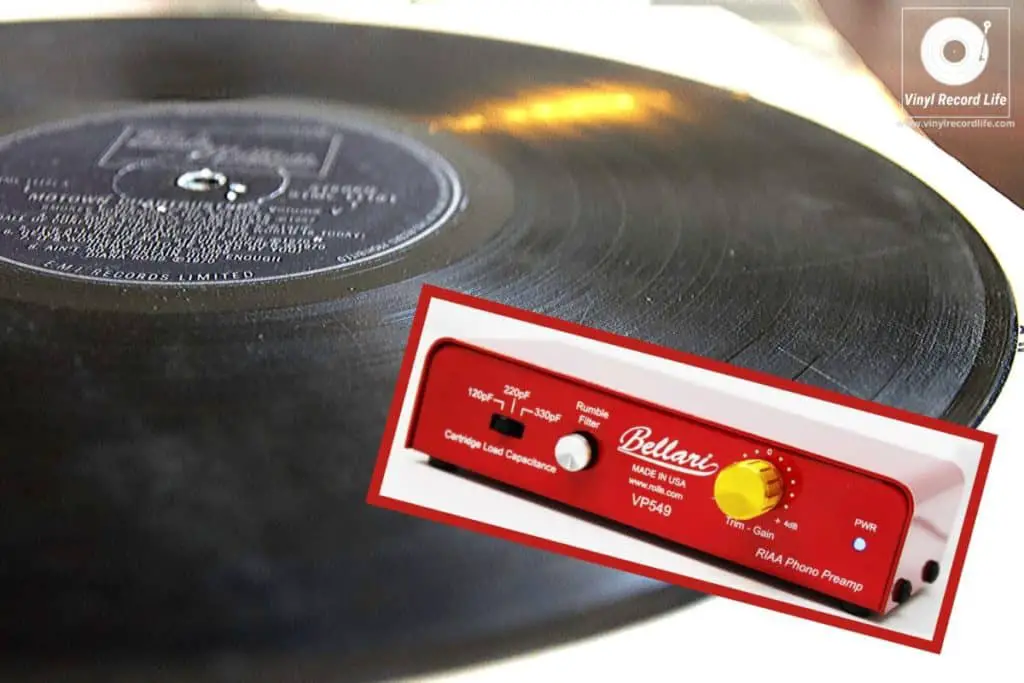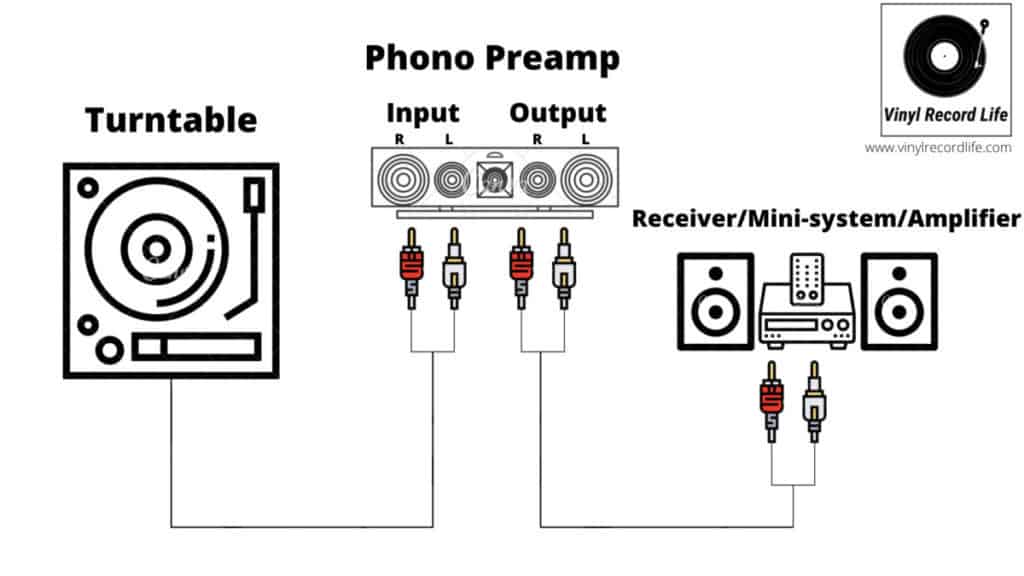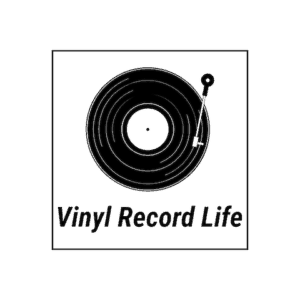
It’s easy to forget sometimes just how important certain parts of your record-playing set-up are, and take for granted the fully-integrated nature of many modern turntables.
One component of a turntable set-up that plays a very important role in achieving sound perfection is a phono preamp.
A phono preamp is a component that takes the signal from your turntable and amplifies it to a level that then permits you to connect it to your sound system, in the same manner you would do with any other audio source. A phono preamp is also sometimes known as a phono stage.
Whether you need to buy a separate phono preamp for your audio system set-up depends on a few factors. We’ll discuss these below, and will also look at the different types, how to tell if you already have one, and some other general points around preamps.
What a Phono Preamp Does, In Detail
A turntable produces an audio signal that is extremely low, and the signal that comes out of its cartridge is around 1000 times lower than that which a CD or streaming device produces. Therefore, this weak signal needs to be amplified significantly to make it strong enough.
A preamp is an electronic circuit that does exactly that: it boosts this weak electronic audio signal being produced by the turntable, and then delivers a much stronger signal.
This weak signal is called a PHONO signal and measures 0.005 Volts, and in the process of being boosted it becomes a LINE LEVEL signal which measures 0.3V. It’s this LINE signal that is required to be able to work with audio equipment such as stereo systems and speakers.
Another effect the phono preamp has is that it helps to apply the RIAA equalization curve, which is effectively a balancing out of the low and high frequencies of the recording for a more equalized playback.
Internal or External? The Phono Preamp Pros and Cons
There are two types of preamp; internal, which is built into a turntable or record player, and external, which sits apart as a separate piece of equipment.
Internal preamps have the benefit of not requiring extra wiring thanks to being an integral part of the record player already, and of course do not carry an additional cost. They also occupy less space.
However, a drawback of the internal preamp is that its user has no control over it and therefore one less point of control over the sound quality of the music.
With an external preamp, the pros and cons are inverse. Far greater control over the music sound quality thanks to the ability to tweak the configuration comes with added wiring and a separate power supply, as well as a cost.
The benefits are often worth that additional cost though, as they provide good protection from interference, their separate power supply eliminate the electrical noise an internal phono stage picks up, and there is choice between a wide range of models.
Do I Have a Phono Preamp Already?
A lot of newer models of turntable have in-built phono preamps, and there are a few indicators that’ll tell you whether this is the case.
Firstly, if it has a small box or panel which has a set of inputs, a set of outputs, a small ground screw and a phono label, then it’s got a phono stage built in. Some of these newer models also have a manual PHONO/LINE switch, which allows you to disengage the internal phono preamp and pass through to an external one if you so wish.
Another indicator as to whether your turntable has an internal preamp is the presence of a USB output. If it has one, then you’re in business already.
If you’re using an older amplifier (not to be confused with a preamp! An amplifier boosts the LINE LEVEL signal to the required level to be able to be sent to a set of speakers) or stereo system, these often have preamps built in and you can determine this by looking for inputs marked phono. Some newer speakers also come with a built-in phono preamp, and will state so clearly in the product specs.
Most newer amplifiers and receivers don’t have a phono preamp built in, neither do many older and vintage record players.
How Cartridge Type Affects a Phono Preamp
One other thing to be aware of when it comes to preamps is the impact of the type of cartridge being used. The two basic types of cartridge on a turntable are Moving Magnet (MM) and Moving Coil (MC), and their names refer to the part they carry and which converts the vibrations of the stylus into the electrical signal that the preamp must then boost.
An MC cartridge has less output than an MM one, so needs more amplification, and the preamp therefore must be capable of this extra boost.
Most phono preamps can work with both types of cartridge and have a switch to change between the two, but while an MC cartridge connected an MM phono input should produce the right sound quality, an MM cartridge playing through an MC phono preamp will most likely distort the sound.
Connecting a Phono Preamp: How To Do It
If you’ve ascertained you need an external phono preamp, the next step is to get hold of one and hook it up to your turntable or record player.
You’ll need audio cables, which you’ll plug into the L/R output terminals on your turntable. Then, plug the other ends of these cables into the input jacks on your phono preamp. If your turntable has a ground terminal then connect to it as per the set-up instructions.
Next up, connect some good quality audio cables to the output jacks on your phono preamp, and plug the other ends of them into your audio system, be it an amplifier or speakers. Just make sure you don’t plug them into a phono input by accident.

Arrangement and Positioning is Important!
When connecting equipment, it’s important to avoid running the audio cables and power cables parallel, and to ensure they don’t cross one another. That’s to say, don’t bunch them together when trying to tidy up the cables to make it all look neat, as this can create hum.
Just as important is where you place an external phono preamp. Never place it on top of other kit or equipment, as this can also lead to hum, and never plug a phono preamp into another audio component such as a CD player as there is a real risk of damage due to the difference in signal levels.
Is There Much of a Difference Between Phono Preamps?
Yes, there is! The quality of your phono preamp will impact the sound quality of your output greatly, as the amplification of the PHONO signal to a LINE LEVEL signal is a process that can introduce all kinds of noise “pollution” if not done properly. This is a critical step with regards to the minimization of sound distortion, so needs to be done well.
The most expensive phono stages aren’t always the best ones, but some of the more expensive options are also of such high quality that they are worth every cent, while there are also some very affordable ones that do an excellent job. You get the idea: there is a lot of choice and it’s worthwhile spending some time weighing up the different options.
When it comes down to it, it’s really a case of researching the models that fit your budget and seeing which phono preamps have the best reviews in relation to the specific components you’ll be hooking them up to, as sound quality can vary on the same preamp depending on what it’s being paired with.
